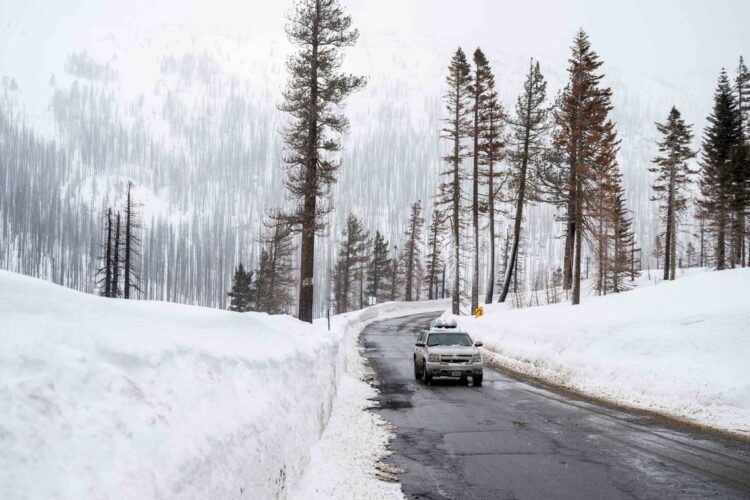This year’s winter has dropped astounding amounts of snow across California, and the Tahoe region is seeing one of its snowiest seasons ever.
Here’s how this winter season is stacking up for snow totals:
Snowpack levels
In the latest official snowpack measurement for the state on March 3, water officials said levels were “hovering just below” the 1983 record.
The UC Berkeley Central Sierra Snow Lab has recorded 668 inches so far this water year, which started on Oct. 1.
It’s just 3 inches away from becoming the second snowiest season on record.
Stations across California have maintained above average levels throughout the season.
According to the California Department of Water Resources, 47 stations in the Central Sierra reported 226% of normal on March 17. The average snow water is equivalent to 57.8 inches.
In the southern Sierra, 29 stations reported 273% of normal. Followed by 29 stations in the Northern Sierra reporting 177% of normal.
Statewide, the snowpack is 215% of the April 1 average, which is considered the peak of snow season.
Snowfall resorts season totals
Below are season snowfall totals at resorts throughout Tahoe region, as of March 17, according to resort websites:
The Central Sierra Snow Lab recorded 51 inches, or 4.25 feet, in the last seven days.
More snow in the forecast
More snow is on the way for the Central Sierra.
“Later Monday and into Wednesday we are expecting significant impacts for the mountains with travel delays, chain controls and possible road closures,” said Idamis Del Valle-Shoemaker, meteorologist at the National Weather Service.
Throughout the day temperatures will remain in the 40s then dip into the 20s at night, according to the weather service forecast.
Will snowpack help the drought?
Snow levels have significantly helped California’s drought conditions, but according to the Department of Water Resources, we will need more than just one good year.
“Thankfully the recent storms combined with the January atmospheric rivers have contributed to an above-average snowpack that will help fill some of the state’s reservoirs and maximize groundwater recharge efforts. But the benefits vary by region, and the Northern Sierra, home to the state’s largest reservoir Lake Shasta, is lagging behind the rest of the Sierra,” said Director Karla Nemeth with the Department of Water Resources in a March 3 news release.
“It will also take more than one good year to begin recovery of the state’s groundwater basins.”
According to the U.S. Drought Monitor, more than 63% of the state is drought free.
What do you want to know about life in Sacramento? Ask our service journalism team your top-of-mind questions in the module below or email servicejournalists@sacbee.com.
[ad_2]
Source link







